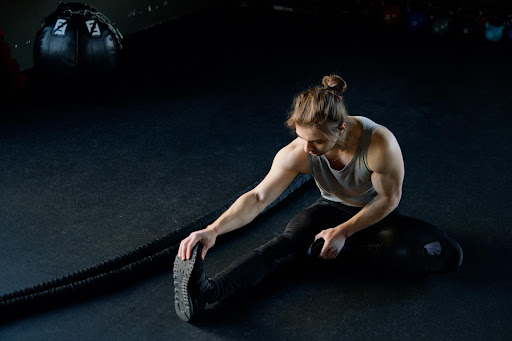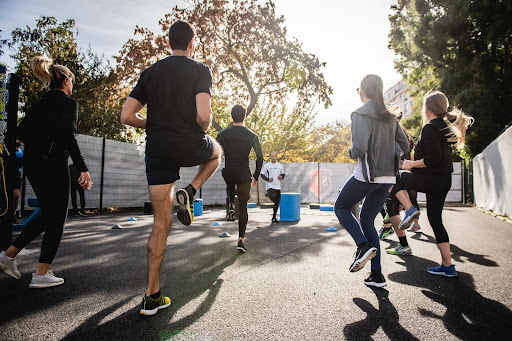Functional strength training is a great way to burn fat and build muscle. But, to fully optimize your circuit training results make sure you add in some additional stretches to prevent injury and get the most out of the time you spend in the gym. Today we are sharing why stretching is essential and providing you with stretches to add to your circuit workout routine.
Why is stretching important?
Stretching prevents painful muscle strains and injuries by keeping your muscles limber and able to move through their full range of motion. It can make the difference between healthy, flexible muscles and tight, weak ones. When participating in functional strength training, it is essential to incorporate stretches in order to avoid injury and tightness.
Types of Stretches
Dynamic
Dynamic stretching involves moving your joints through their full range of motion, with a particular emphasis on improving agility, speed, and acceleration. Dynamic stretching movements help your muscles warm up and loosen up. Some examples of these stretches include torso twists, walking lunges, and leg swings. Repeat the movement 10-12 times.
Static
Static stretching is a form of stretching that involves continually moving a body part as far as you can comfortably and then holding that position for about 30 seconds. It is best to do 3 sets of each stretch.
Static stretching is very effective at increasing flexibility and preventing injury. Some examples of these stretches include seated butterflies, hamstring stretch, and kneeling hip flexor stretch.
Dynamic and static stretches are the most common types of stretching but if you’re looking for more options The American Council on Exercise (ACE) shares more styles of stretching here.
Stretching mistakes to avoid
Not warming up
Did you know you should warm up before you stretch? Prior to stretching, warm up your muscles with a few minutes of light exercise. A warm-up will increase core temperature and generate blood flow to the muscles and connective tissues. According to Harvard Medical School, research has shown that stretching the muscles before they’re warmed up can actually hurt them. “When everything is cold, the fibers aren’t prepared and may be damaged. If you exercise first, you’ll get blood flow to the area, and that makes the tissue more pliable and amenable to change”.
Overstretching
Stretching should not be painful. If you are experiencing pain while stretching, you are likely overstretching your muscles. It is normal to experience slight discomfort in your muscles, but never pain. If you feel especially tight or sore in some areas, try gently stretching those particular muscle groups multiple times throughout the day rather than all at once.
Holding your breath
We noticed that many new clients will hold their breath while stretching, which makes their muscles tense up and become resistant to stretching. By taking slow, deep breaths as you stretch, you increase the effectiveness of your stretching routine. This reduces tension in your muscles which helps you relax during a stretch and reduces the risk of injury.
Benefits of stretching
- Improve your overall range of motion
- Enhance your flexibility
- Increase muscle temperature and blood flow
- Support your circuit workout by warming up and cooling down so you can get the best circuit training results
- Calm your mind
Stretches to add to your functional strength training workouts
All in all, it’s clear that stretching has a wide range of benefits that are useful for athletes and non-athletes alike. Knowing what those benefits are can help maximize your circuit training results, which will likely lead to better overall performance in your functional strength training sessions.
Check out our new Circuit Works Santa Monica location to get started today. Purchase a monthly pass and enjoy group fitness or ask us about 1-1- personal training.





